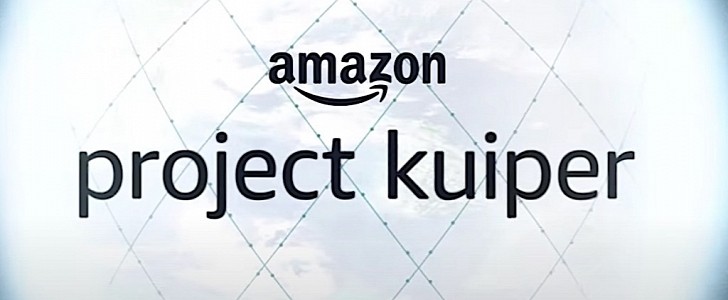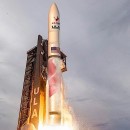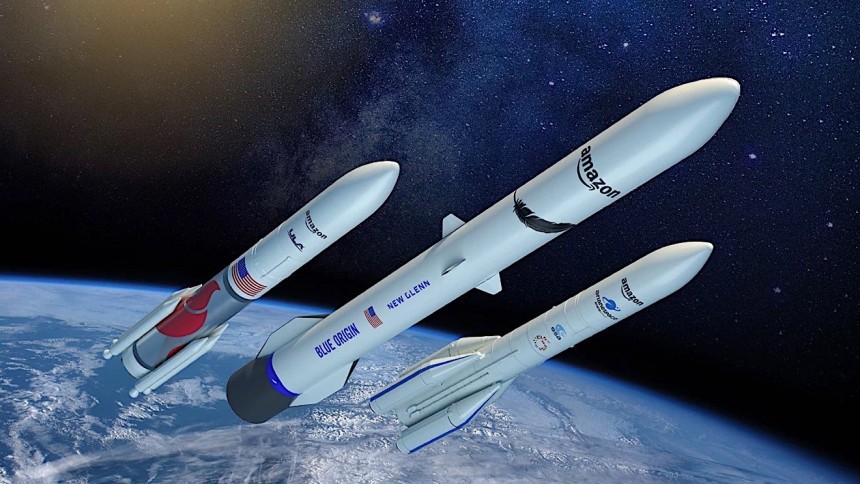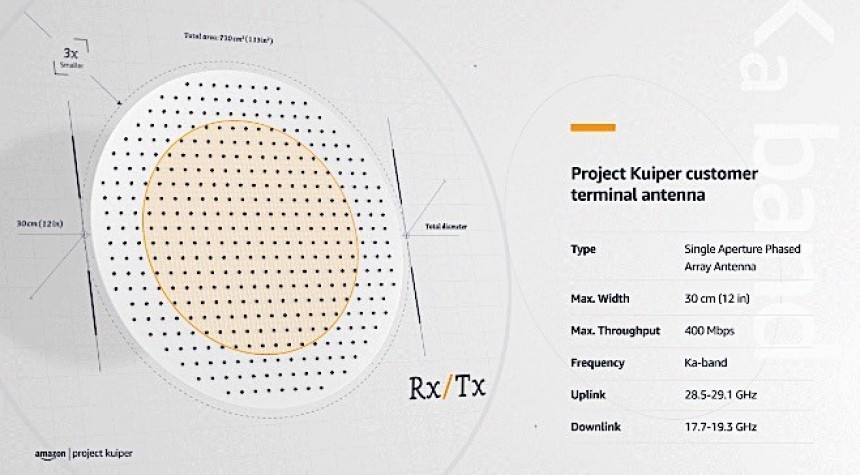These days we're witnessing an increasing push to put technology in low orbit capable of providing Internet access to areas where it cannot be offered through traditional means. There are several companies working toward this goal, including SpaceX and OneWeb.
SpaceX’s constellation of Internet satellites is called Starlink, and will eventually include a total of about 12,000 satellites (at the moment there are over 3,000 of them already deployed). OneWeb's solution, on the other hand, is much smaller, consisting of just short of 650 satellites.
About two years ago, Amazon decided to position itself between the two with exactly 3,236 satellites. Its constellation is called for now, Project Kuiper, and was approved by the FCC back in the summer of 2020.
As per the official description, Project Kuiper will be “capable of providing reliable, affordable broadband service to unserved and underserved communities around the world.” Kind of what all the other ones out there plan to do as well.
Being cooked up in the Amazon laboratories over in Redmond, Washington, the idea will rely on the actual satellites to be deployed in orbit, and a receiver antenna to capture the signal being beamed down.
As far as satellites go, not much about them is known at the moment. Two of them, called KuiperSat-1 and KuiperSat-2, will be built and were announced this past week as star cargo, alongside the Astrobotic Peregrine lunar lander, on the inaugural flight of the United Launch Alliance (ULA) Vulcan Centaur rocket, scheduled to depart Earth sometime next year.
The antenna, on the other hand, is another story altogether and is described by Amazon as nothing short than a revolution in this field.
In essence a Ka-band antenna, like most others in its segment, it should have been built with its transmit and receive arrays at a decent distance from one another, to allow them to cover the wide frequency range.
Amazon however didn’t want to unload on its future customers a bulky piece of equipment, so it dreamed up a new architecture that should allow for the transmit and receive arrays to overlay one over the other, a thing “never […] accomplished in the Ka-band.”
Now a phased array antenna, the hardware could be made to measure just 12 inches (30 cm) in diameter, “three times smaller and proportionately lighter than legacy antenna designs.”
A prototype of the thing has already been built, and according to Amazon it delivers Internet at speed of 400 Mbps – and that’s just the start, as future versions could be even more capable.
As said, Amazon plans to launch the first two satellite prototypes next year, to test both space-floating hardware and Earth-based antennas. As per the company, the flight will look into the “communications and networking technology that will be used in our final satellite design.”
It’s unclear when the first production system should be ready for launch to orbit, but Amazon is already thinking ahead and has secured tens of launch contracts with ULA (both Atlas and Centaur rockets), Arianespace (Ariane 6), and Blue Origin (New Glenn).
As for costs of the project, we all know Amazon is not one to cut corners. At the time of writing, Project Kuiper (a reference to the Kuiper Belt, in turn, named for astronomer Gerard Kuiper) is estimated to cost the company a staggering $10 billion, an immense sum of money Amazon will probably not get back all that fast.
Especially given how the giant will probably target Starlink’s rather high prices with lower rates, and given how it targets not only “businesses and other organizations operating in places without reliable broadband,” but also schools and hospitals.
About two years ago, Amazon decided to position itself between the two with exactly 3,236 satellites. Its constellation is called for now, Project Kuiper, and was approved by the FCC back in the summer of 2020.
As per the official description, Project Kuiper will be “capable of providing reliable, affordable broadband service to unserved and underserved communities around the world.” Kind of what all the other ones out there plan to do as well.
Being cooked up in the Amazon laboratories over in Redmond, Washington, the idea will rely on the actual satellites to be deployed in orbit, and a receiver antenna to capture the signal being beamed down.
The antenna, on the other hand, is another story altogether and is described by Amazon as nothing short than a revolution in this field.
In essence a Ka-band antenna, like most others in its segment, it should have been built with its transmit and receive arrays at a decent distance from one another, to allow them to cover the wide frequency range.
Amazon however didn’t want to unload on its future customers a bulky piece of equipment, so it dreamed up a new architecture that should allow for the transmit and receive arrays to overlay one over the other, a thing “never […] accomplished in the Ka-band.”
A prototype of the thing has already been built, and according to Amazon it delivers Internet at speed of 400 Mbps – and that’s just the start, as future versions could be even more capable.
As said, Amazon plans to launch the first two satellite prototypes next year, to test both space-floating hardware and Earth-based antennas. As per the company, the flight will look into the “communications and networking technology that will be used in our final satellite design.”
It’s unclear when the first production system should be ready for launch to orbit, but Amazon is already thinking ahead and has secured tens of launch contracts with ULA (both Atlas and Centaur rockets), Arianespace (Ariane 6), and Blue Origin (New Glenn).
As for costs of the project, we all know Amazon is not one to cut corners. At the time of writing, Project Kuiper (a reference to the Kuiper Belt, in turn, named for astronomer Gerard Kuiper) is estimated to cost the company a staggering $10 billion, an immense sum of money Amazon will probably not get back all that fast.
Especially given how the giant will probably target Starlink’s rather high prices with lower rates, and given how it targets not only “businesses and other organizations operating in places without reliable broadband,” but also schools and hospitals.














